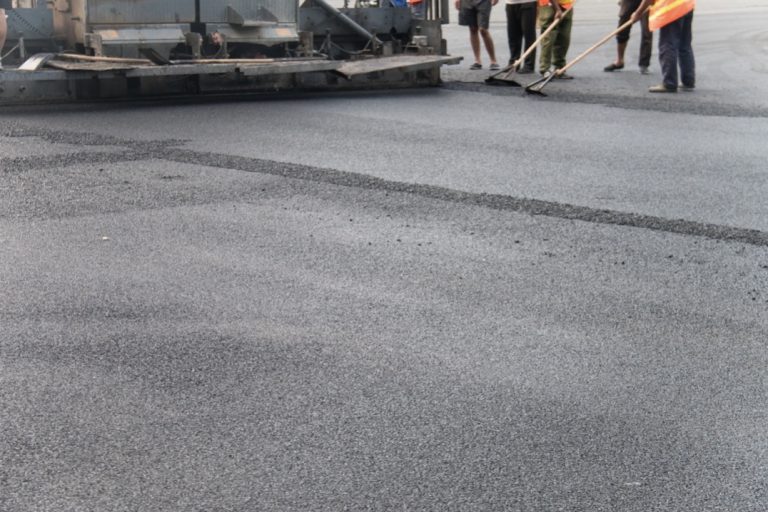Thanks to supply chain shortages and rising material costs largely caused by the Covid-19 pandemic, managers are looking for more efficient and affordable ways to manage assets. As the values of materials go up, it also becomes more costly to keep your current materials well-maintained.
Pavement managers can make sure that proper pavement maintenance is being utilized. Pavement tends to deteriorate more quickly as time goes on. As it gets older, it will break down more easily.
Rehabilitation and maintenance are two popular treatments that are used to extend the life of pavement. Maintenance can help to slow the rate of deterioration by fixing defects before they get worse.
If you’d like to learn more, then keep on reading and we will show you why pavement management is so important.
Story Stages
Working Definitions
As pavement gets exposed to the harsh elements of the environment and auto and foot traffic, it will start to deteriorate. Rehabilitation and maintenance can be used to slow the deterioration of pavement and even help to restore it to a better condition.
Maintenance operations, such as patching, chip seals, and crack sealing can help to slow deterioration. These processes identify and address certain pavement defects that contribute to the overall deterioration of the material.
With rehabilitation, you can reconstruct parts of an existing pavement and reset the deterioration process. For example, replacing and removing the wearing course in a pavement will provide new wearing course material and delay any deterioration.
With that said, reconstructing an entire pavement structure isn’t considered to be rehabilitation. Instead, it is seen as new construction because the processes that are used are usually those that are developed for new pavement construction.
Pavement management, as well as life cycle cost analyses, are utilized when deciding on the extent, timing, and type of rehab and maintenance actions.
Pavement Maintenance and Rehabilitation Process
To put it simply, there are multiple levels of treatment that can be used to correct pavement deterioration. These levels include routine maintenance, periodic maintenance, rehabilitation, and reconstruction.
Pavement maintenance describes all of the techniques and processes that are used to lengthen the life of pavement by slowing down the rate of deterioration. This means that the quality of the material will be directly connected to the quality, type, and timing of the maintenance that is performed.
The most popular preservation methods include micro-surfacing, cape seal, slurry seal, chip seal, sand seal, fog seals, patching, and crack sealing.
Companies like Rombus Industries are working to make pavement even easier to work with and use.
Timely Treatment
The sooner that you can perform rehabilitation or maintenance on pavement, the more cost-effective your efforts will be. For the majority of pavement’s life, the condition will drop by about forty percent. However, shortly after that, the quality of the pavement will continue to drop significantly.
In order to restore the condition of pavement, it will cost several times as much if the pavement is left to deteriorate two to three years after the optimal rehabilitation point.
All rehab projects should use some form of economic analysis in order to see how you can optimize the timing and operation. This is what makes pavement management so important.
Pavement Management System
Pavement management has to do with the systematic process of operating, upgrading, and maintaining a network of pavements. By analyzing the life cycle of pavement, a pavement management system can help you figure out the best time to treat your pavement.
You’ll also be able to determine the cost-effective process and how much money you will need to spend to maintain a roadway system.
A pavement manager should be careful to not see a pavement management system has a system that contains all of the answers. There will need to be a good amount of discretion and judgment to make sound decisions.
A pavement management system can be as simple as a sheet of paper or it can be as complex as an intricate digitized database.
System Capabilities
A pavement management system combines various processes and components to provide suggestions to the pavement manager. The components are usually divided into project-level (focused perspective) and network-level (big picture) items.
Examing the network level will show you data like the system’s inventory. This will include:
- system conditions and goals
- budgetary resources
- past construction and maintenance activities
- surface types
- facility locations
At the project levels, permitting, project designs, engineering data, project budgets, and distress surveys will be documented. All of this information will be processed by the pavement management system to come up with recommendations.
The recommendations will then be reviewed and analyzed to figure out how effective they will be and how they will help reach certain goals.
With certain computer programs, a pavement management system can create tables, charts, and reports. These reports can include historical conditions, predictions on future conditions, and it can also offer strategies for prioritization.
Graphs, charts, and tables can be used to summarize information.
The Importance of Knowing About Pavement Management
Hopefully, after reading the above article, you now understand the importance of pavement management and pavement maintenance. As we can see, if pavement is not maintained properly, it can quickly deteriorate, which can lead to costly repairs and replacements.
Are you looking for other helpful and interesting articles like this one? If you are, then you should make sure to check out the rest of our site today for even more!
